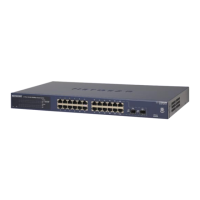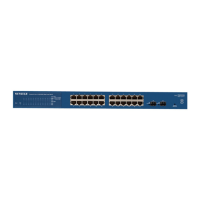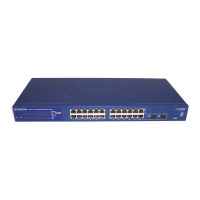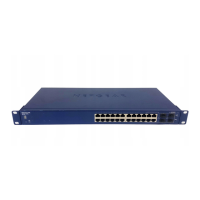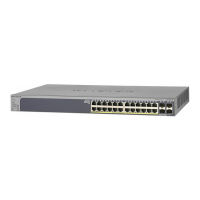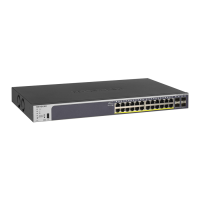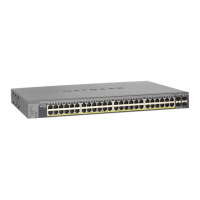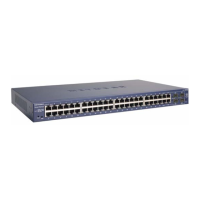Manage Device Security
181
NETGEAR 24-Port Gigabit Smart Managed Pro Switch with PoE+ and 2 SFP Ports Model GS724TPv2
The login window opens.
4. Enter the switch’s password in the Password field.
The default password is password.
The System Information page displays.
5. Select Security > Management Security > RADIUS > Global Configuration.
The Current Server IP Address field is blank if no servers are configured (see Configure a
RADIUS Authentication Server on the Switch on page 182). The switch supports up to
three RADIUS servers. If more than one RADIUS server is configured, the current server
is the server configured as the primary server. If no servers are configured as the primary
server, the current server is the most recently added RADIUS server.
6. In the Max Number of Retransmits field, specify the maximum number of times a request
packet is retransmitted to the RADIUS server.
The valid range is from 1 to 15. The default is 4.
Consider the maximum delay time when you are configuring RADIUS maximum
retransmit and RADIUS time-out values. If multiple RADIUS servers are configured, the
maximum retransmit period on each server runs out before the next server is attempted.
A retransmit does not occur until the configured time-out period on that server passes
without a response from the RADIUS server. Therefore, the maximum delay in receiving
a response from the RADIUS application equals the retransmit time x time-out period for
all configured servers. If the RADIUS request was generated by a user login attempt, all
user interfaces are blocked until the RADIUS application returns a response.
7. In the Timeout Duration field, specify the time-out value, in seconds, for request
retransmissions.
The valid range is from 1 to 30. The default is 5.
Consider the maximum delay time when you are configuring RADIUS maximum
retransmit and RADIUS time-out values. If multiple RADIUS servers are configured, the
maximum retransmit period on each server runs out before the next server is attempted.
A retransmit does not occur until the configured time-out period on that server passes
without a response from the RADIUS server. Therefore, the maximum delay in receiving
a response from the RADIUS application equals the retransmit time x time-out period for
all configured servers. If the RADIUS request was generated by a user login attempt, all
user interfaces are blocked until the RADIUS application returns a response.
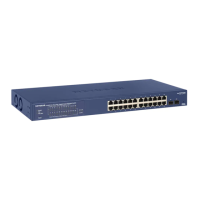
